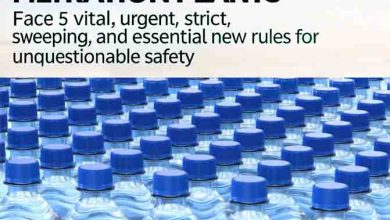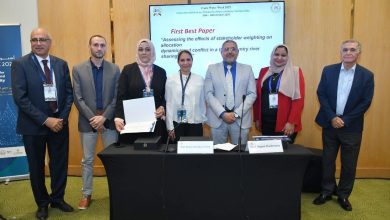Removing Microplastics from Tap Water – Simple At-Home Method Tested by Scientists
Scientists test a simple, effective at-home method to remove microplastics from tap water, developed in China. Learn how boiling and straining can help.
Plastic pollution is a mounting crisis affecting the environment and human health. Despite efforts to recycle, only about 10% of the plastic we produce each year is effectively recycled. The rest ends up contaminating oceans, rivers, soil, and even the air we breathe. Alarming studies now confirm that microplastics—tiny plastic particles less than 5 millimeters in size—are found everywhere, including in our tap water. But recent research from China offers a simple, at-home solution to tackle this growing concern.
Table of Contents
- What Are Microplastics?
- The Dangers of Microplastics to Human Health
- Tap Water vs. Bottled Water: Which Is Safer?
- The Chinese Method to Remove Microplastics from Tap Water
- Why You Should Be Concerned
- Conclusion
- Related Articles
What Are Microplastics?
Microplastics are plastic fragments measuring less than 5 millimeters. These particles form when larger plastics break down or when manufactured at this size, such as microbeads found in cosmetics or glitter. Sunlight, water, and friction cause plastics to degrade, releasing these tiny fragments into the environment.
Microplastics are commonly found in packaging, synthetic clothing, tires, cleaning products, and even toothpaste. From there, they end up in rivers, oceans, and ultimately, our food and drinking water. This widespread contamination makes it nearly impossible to avoid ingesting microplastics.
The Dangers of Microplastics to Human Health
Recent studies have confirmed that microplastics are capable of traveling throughout the human body. Researchers have detected microplastic particles in the intestines, heart, brain, and even the placenta. Because of their minuscule size, these particles can bypass the body’s natural protective barriers, accumulating in tissues and potentially disrupting their function.
Some of the health problems linked to microplastic exposure include:
- Gut microbiota disruption
- Insulin resistance
- Cardiovascular issues
- Immune system interference
Tap Water vs. Bottled Water: Which Is Safer?
It may seem logical to assume that bottled water is safer than tap water, but studies indicate otherwise. In fact, a Canadian study discovered that individuals who consume bottled water may ingest up to 90,000 plastic particles annually, compared to only about 4,000 particles for those who drink tap water.

Why the difference? Bottled water is often stored in plastic containers, which leach microplastics into the liquid over time. Additionally, the manufacturing process itself can introduce contaminants. Therefore, tap water—despite common misconceptions—may be the healthier choice when it comes to microplastic contamination.
The Chinese Method to Remove Microplastics from Tap Water
Researchers at the University of Guangzhou, China, have discovered an effective, easy-to-use method to reduce microplastic contamination in tap water. Their approach involves boiling tap water, allowing it to cool, and then straining it through a metal sieve. This technique is proven to eliminate up to 80% of microplastics commonly found in drinking water, such as polystyrene, polyethylene, and polypropylene.
Why This Method Works
This technique is particularly effective in areas with hard water. When boiled, microplastics tend to attach to calcium carbonate crystals (limescale) that form as the water cools. When the water is strained, these microplastic-laden crystals are removed.
How to Apply This Method at Home
- Boil tap water until it reaches a rolling boil.
- Allow the water to cool completely, allowing limescale to form.
- Strain the water through a fine metal sieve to remove the limescale and trapped microplastics.
Why You Should Be Concerned
Microplastics are more than just an environmental concern; they represent a direct threat to human health. Studies have shown their potential to cause harmful effects once they penetrate the bloodstream. The implications range from inflammatory responses to severe health complications.
Governments and organizations worldwide must prioritize reducing plastic pollution. But individuals can also take action by implementing methods like the one proposed by the University of Guangzhou.
Conclusion
As the global plastic crisis intensifies, innovative yet simple solutions like the boiling and straining method from China provide a glimmer of hope. Addressing the microplastic problem at home is a step toward safeguarding our health and well-being.
Related Articles
- The Health Risks of Microplastics in Drinking Water
- How to Reduce Plastic Pollution at Home
- Top 5 Eco-Friendly Water Filtration Methods







